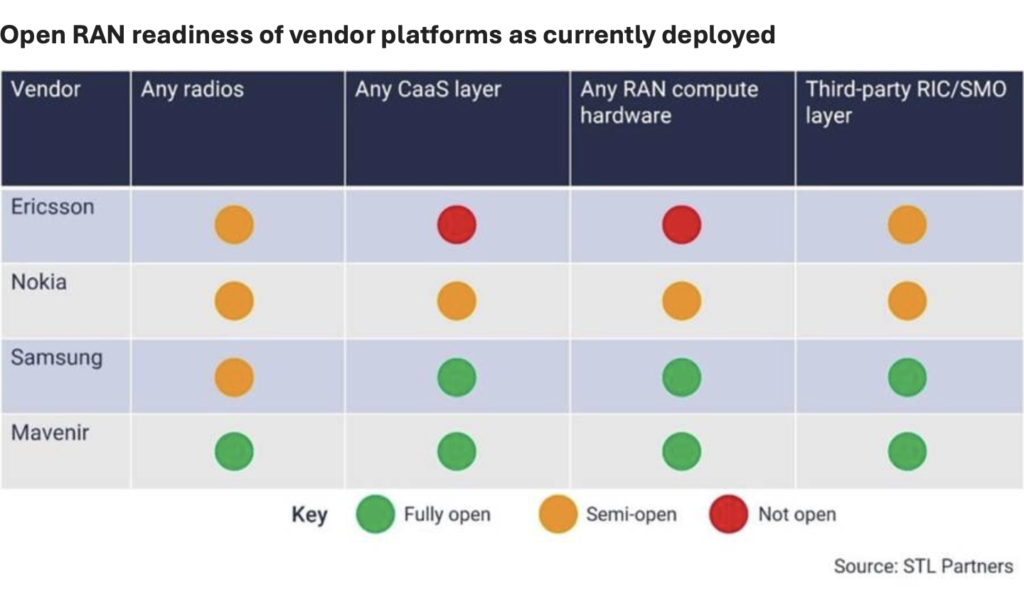STL Partners’ research finds operators are focused on the benefits of open RAN and that it is possible to run RAN workloads, at scale, on the public cloud
Most large-scale deployments of cloud-native RAN at Tier 1 telcos are based on single-vendor virtualised RAN (vRAN) with all or most parts of the stack supplied by a single vendor. They also have limited use of open RAN-compliant interfaces between them.
This is according to STL Partners’ latest update to its Telco cloud deployment tracker. The tracker reviewed deployments of virtualised network functions (VNFs) and infrastructure in live networks during 2024 and Q1 2025.
However, the tracker also found that operators are deploying vRAN in innovative ways to preserve the many benefits of ‘pure-play’ open RAN. In particular, portability across multiple Containers-as-a-Service (CaaS) layers is emerging as a strong unique selling point.
“Tier 1 advocates of open, disaggregated networking are implementing vRAN in ways that at least capture some of the benefits of open RAN architecture,” claims David Martin, Senior Analyst at STL Partners who is the author of the study.
Development and deployment
The report takes an in-depth look at the development and deployment of vRAN and open RAN platforms that can be ported across multiple CaaS layers. Martin argues that the cloud-based character of open RAN was relatively overlooked, with most attention on the integration of the CU/DU and radios from multiple vendors and the performance challenges of using commercial off-the-shelf (COTS) hardware.
Now most vRAN and open RAN vendors can demonstrate interoperability of their platforms across multiple virtualisation layers so the “lack of interoperability across clouds may prove a long-term disadvantage for Ericsson,” Martin says.

Platforms by vRAN vendors vary considerably regarding the degree openness to multiple vendors in different parts of their stack. The report discusses in detail how leading telcos’ deployments seek to utilise and extend those platforms’ open features for greater flexibility, multi-vendor openness and interoperability.
“There is now a growing number of proof points that it is possible to run RAN workloads at scale on the public cloud”, Martin concludes.



